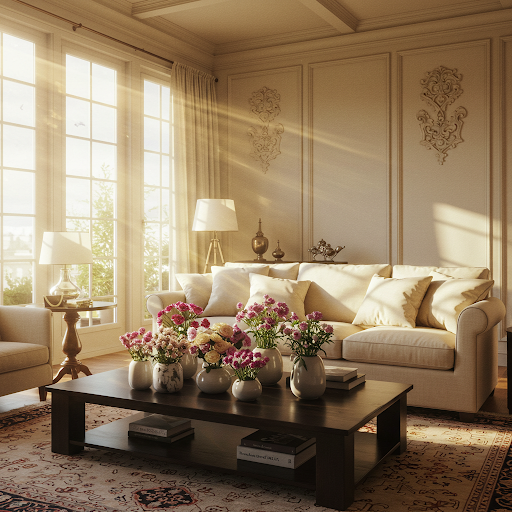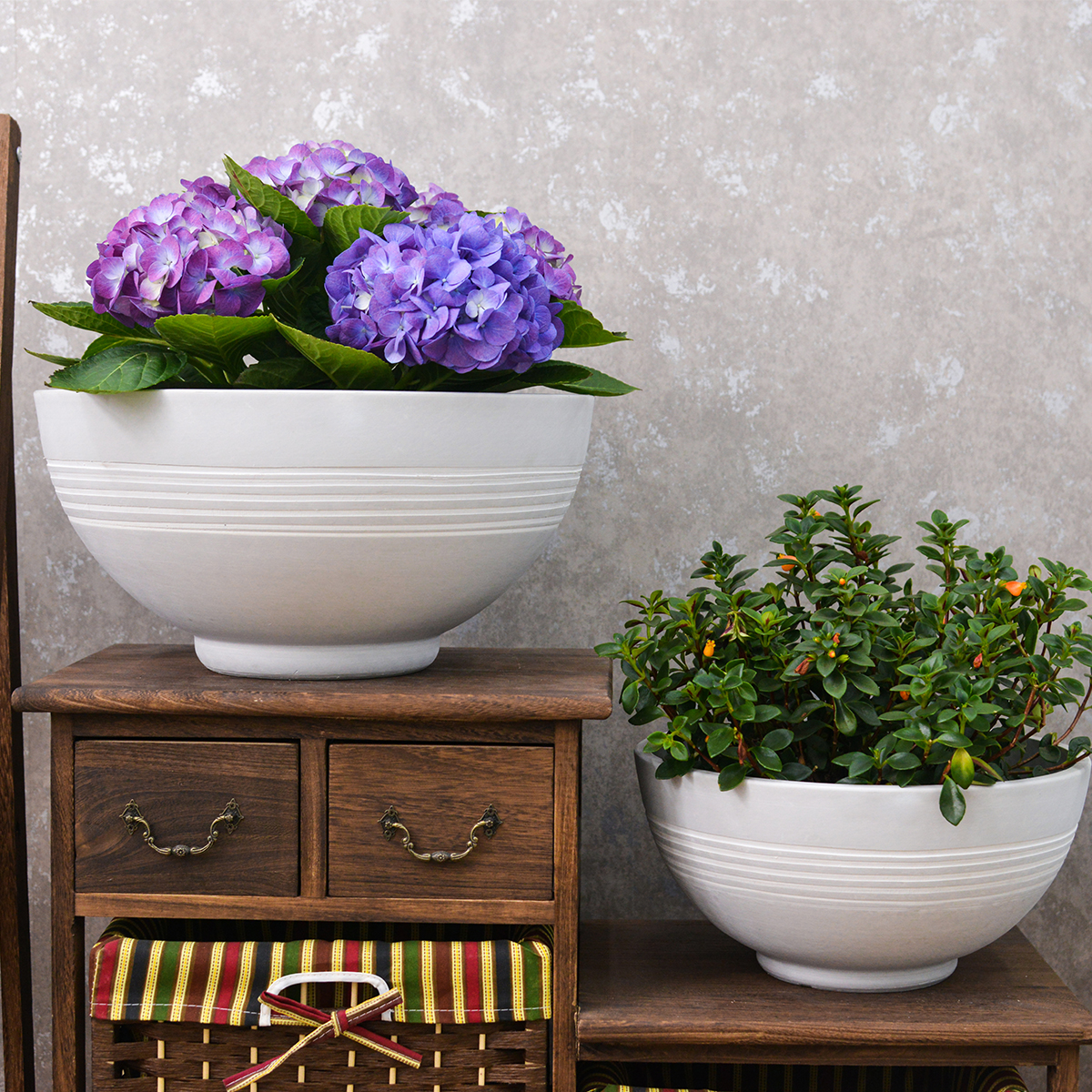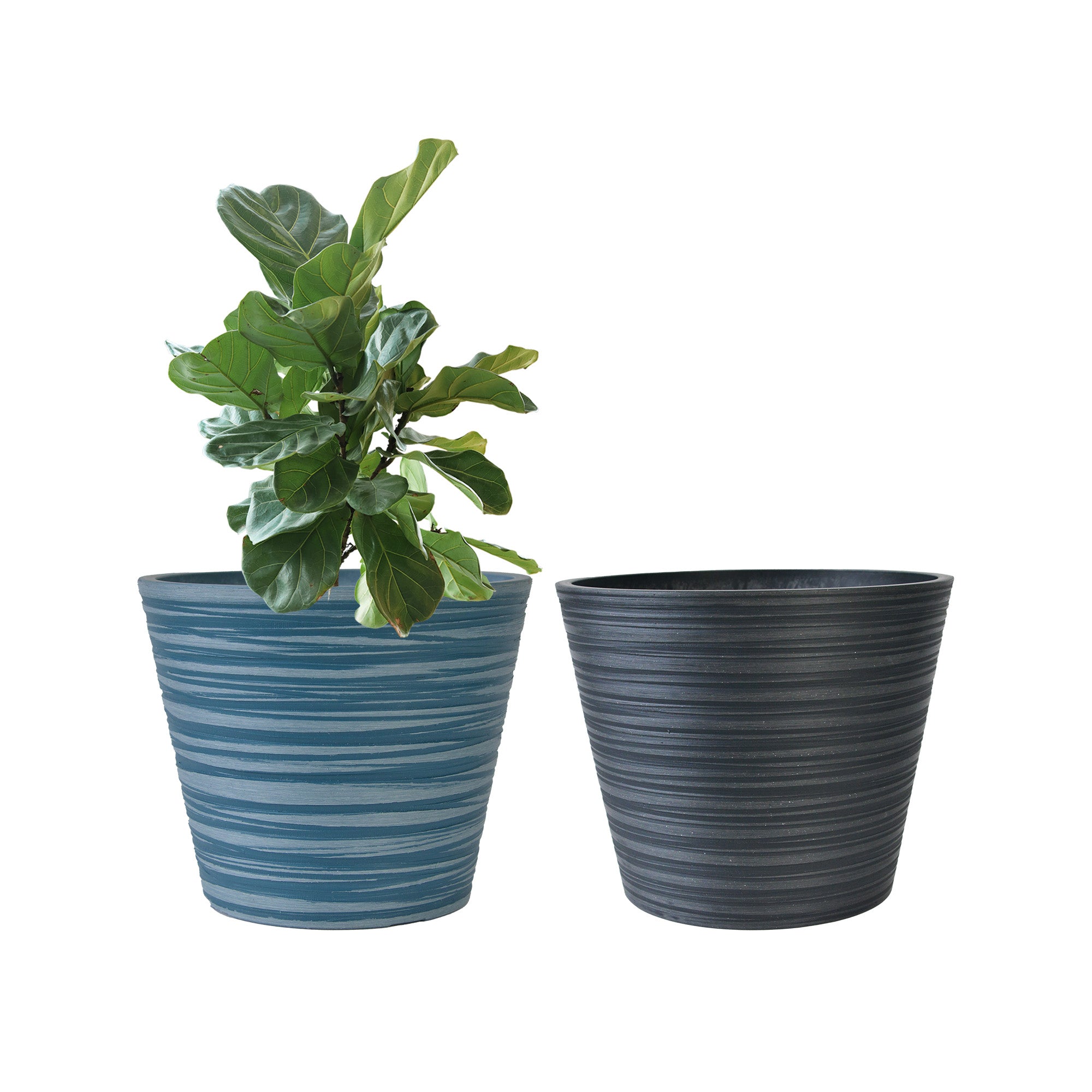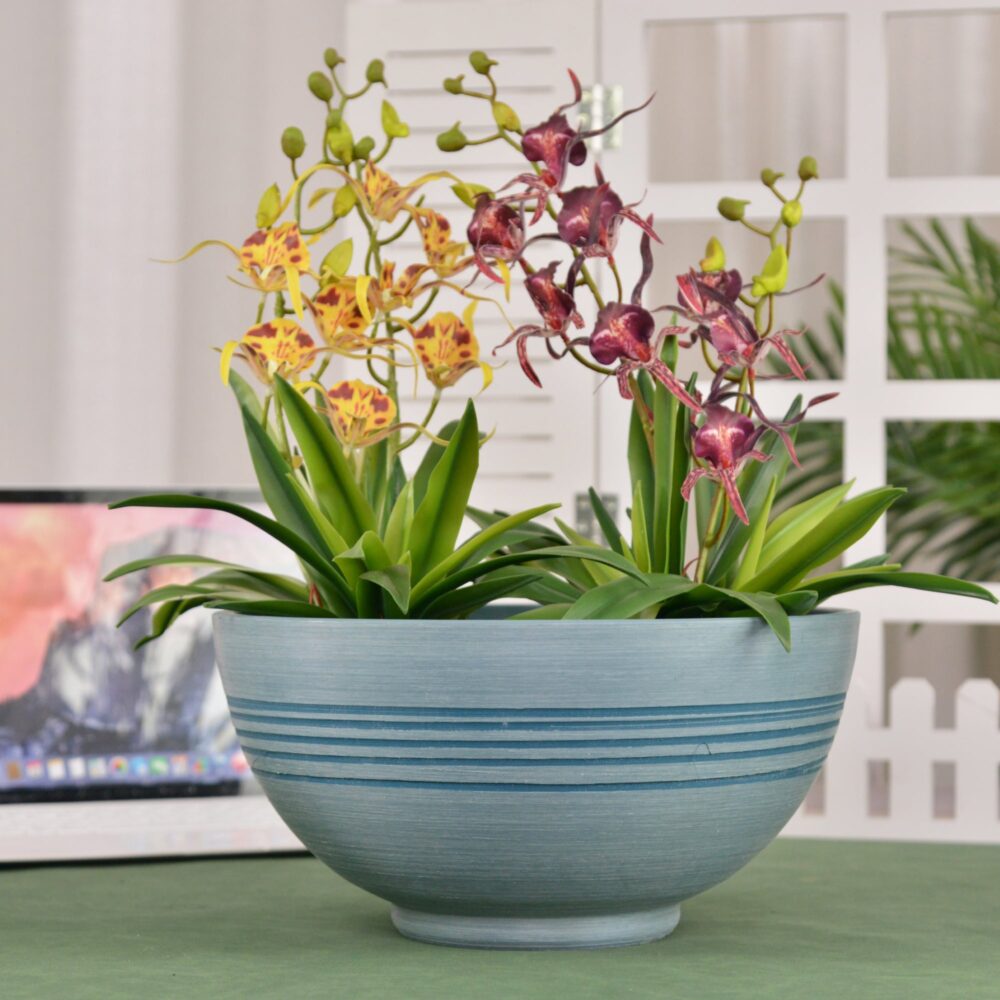Choosing the Right Pot: A Beginner’s Guide to Selecting the Perfect Home for Your Plants
Ever brought home a beautiful potted plant, only to have it wither and die within weeks despite your best efforts? You’re not alone! One of the most common mistakes new gardeners make is choosing the wrong type of pot for their plants. Just like finding the right house, selecting the perfect container is crucial for your plant’s health and survival. This guide will walk you through the pros and cons of different pot materials and how to choose the right size to ensure your plants thrive.

Why the Right Pot Matters:
The pot your plant lives in plays a vital role in its overall well-being. A poorly chosen pot can lead to issues like root rot, stunted growth, and ultimately, plant death. Understanding the characteristics of different pot materials and sizes will empower you to make informed decisions and give your plants the best possible start.
Two Key Steps to Choosing the Right Pot:
- Select the Right Size: This is the most critical factor for plant health.
- Choose the Appropriate Material: Consider your plant’s needs, your gardening experience, and where the pot will be placed.
Step 1: Selecting the Right Pot Size:
Many new gardeners make the mistake of putting a small plant in a large pot, thinking they’re giving it plenty of room to grow. However, “small plant, big pot” can actually be detrimental.
Why Bigger Isn’t Always Better: Small plants have smaller root systems and don’t require a lot of water. In a large pot, the excess soil retains moisture for too long, leading to a lack of oxygen around the roots, which can cause root rot and eventually kill the plant.
How to Choose the Right Size:
- When repotting: Select a pot that is only 2-4 inches (5-10 cm) larger in diameter than the current pot.
- For Beginners: Start with a pot that is just 2 inches (5 cm) larger. It’s better to err on the side of a slightly smaller pot.
- Experienced Gardeners: If you have a good understanding of watering, you might opt for a slightly larger pot within the recommended range.
Gradual Repotting: While it might seem like a hassle to repot your plant into progressively larger pots as it grows, it’s the best way to ensure its health.
Pot Height vs. Diameter: Generally, the height and diameter of a pot are similar. However:
- Deep-Rooted Plants: Choose a taller pot where the height is greater than the diameter (slim and tall).
- Shallow-Rooted Plants: Choose a shorter pot where the height is less than the diameter (short and wide).
Step 2: Choosing the Right Pot Material:
The material of the pot affects its appearance, weight, breathability, and water retention. Understanding these properties will help you choose the best option for your plants.
- Beginners should prioritize pots with good drainage and aeration.
- Experienced gardeners can experiment with more decorative pots that might retain more moisture.
Here’s a breakdown of common pot materials:
For Beginners:
Plastic Pots:
- Pros: Inexpensive, relatively durable, lightweight, available in various sizes, colors, and shapes for both consumers and commercial growers. Many modern designs improve drainage.
- Cons: Retain moisture longer than other materials, which can be harmful to plants that prefer dry soil. Cheaper plastic can be flimsy and break easily.
- Choosing Plastic Pots: Look for pots with multiple drainage holes at the bottom. For larger pots (over 12 inches/30 cm), consider adding a layer of gravel or pebbles at the bottom to improve drainage. Brands like “Air-Pot” or pots with side openings (like the Japanese “Aoyama Pot”) offer excellent aeration.
Terracotta/Clay Pots:
- Pros: Allow for better soil aeration as moisture can escape through the porous walls. This helps prevent root rot and is excellent for plants sensitive to overwatering.
- Cons: Dry out faster, requiring more frequent watering. They are also fragile and can be heavy, especially larger sizes. Terracotta pots can crack in freezing temperatures if filled with soil.
- Choosing Terracotta Pots: Quality varies. Look for thicker, more durable pots that are less likely to break. Imported terracotta is often of higher quality but more expensive.
Unglazed Ceramic Pots (similar to Terracotta):
- Share similar properties with terracotta but might be less aesthetically pleasing and more prone to chipping over time.

For Intermediate to Advanced Gardeners (Use with Caution for Beginners):
Glazed Ceramic Pots:
- Pros: Attractive and suitable for indoor décor, such as tabletops and desks.
- Cons: Heavy and retain a lot of moisture because the glaze prevents evaporation through the pot walls. This can easily lead to overwatering for beginners.
- Choosing Glazed Ceramic Pots: Always choose pots with drainage holes. Use smaller pots to ensure the soil dries out more quickly. Beginners should generally avoid these.
Concrete Pots:
- Pros: Offer a unique texture and come in various sizes and shapes.
- Cons: Very heavy, prone to cracking, and can crack in freezing temperatures. They retain a lot of moisture, similar to glazed ceramic pots, making them unsuitable for beginners who struggle with watering.
Wooden Containers:
- Pros: Porous and can absorb some moisture, though they don’t dry out as quickly as clay. Can be a good option for larger plants outdoors on patios or decks.
- Cons: Wood can rot over time. They can also be heavy to move. Avoid wood treated with creosote, which can harm plants.
Fiberglass Containers:
- Often used for large, decorative planters. Lighter than concrete and won’t crack in freezing temperatures. However, they retain moisture like glazed ceramic pots, so ensure they have drainage holes for good soil aeration.
Less Common for General Home Gardening:
Woven Container Bags (Grow Bags):
- Pros: Relatively new, provide excellent drainage and aeration, lightweight, and can be emptied and stored easily. Often used in nurseries for growing trees.
- Cons: Not ideal for indoor use or windowsills as water drains from the entire surface when watering.
Biodegradable Pots:
- Often made from rice hulls. Retain more moisture, similar to plastic. They decompose over time and are compostable, making them an eco-friendly option, though they can be more expensive than plastic.
Peat Pots:
- Excellent for short-term growth. They break down easily as they age. Offer very good drainage. The entire pot and plant can be directly planted into the soil or potting mix, making them environmentally friendly and good for plant growth.
Final Thoughts for Choosing the Right Pot:
For new gardeners, plastic and terracotta (or similar unglazed clay) pots are the most forgiving choices due to their good breathability, which helps prevent root rot from minor watering mistakes.
More experienced gardeners can experiment with more decorative options like glazed ceramic, concrete, wood (painted or sealed), and fiberglass, as they have a better understanding of watering techniques for pots that retain more moisture.
Always remember that for regular soil-based planting, pots must have drainage holes. This allows excess water to escape, bringing out impurities and allowing the roots to breathe properly.
Finally, bigger is not always better. Avoid the temptation to put small plants in oversized pots. This leads to slow drying soil and can easily cause root rot, even with careful watering.
Choosing the right type of pot is closely linked to successful plant care. With the information provided, you should now have a better understanding of different pot materials and how to select the perfect home for your beloved plants so they can thrive and bring you joy for years to come!
KC3-09k
By greenship|2024-08-16T06:24:36+00:00August 16, 2024|Categories: Hand-carving Series|
11TH
By greenship|2024-08-13T02:50:25+00:00August 13, 2024|Categories: Hand-carving Series|
20VD
By greenship|2024-08-13T06:43:41+00:00August 13, 2024|Categories: Hand-carving Series|
Planter 5 in W / 8 in W / 12 in W or Indoor Outdoor Plants, Modern Decorative Plant Pots with Drainage Hole, Decorative Flower Pots
By greenship-seo|2025-04-10T06:37:58+00:00January 16, 2025|Categories: Hand-carving Series|Tags: Decorative Flower Pots|
13 inch Planter for Indoor Plants, Set of 2 Modern Decorative Plant Pots with Drainage Hole, Cute Bowl Shape Flower Pots
By greenship-seo|2025-04-10T07:41:46+00:00January 10, 2025|Categories: Hand-carving Series|Tags: Decorative Flower Pots, Self-Watering Pots|
HS
By greenship|2024-08-13T06:45:17+00:00August 13, 2024|Categories: Hand-carving Series|






